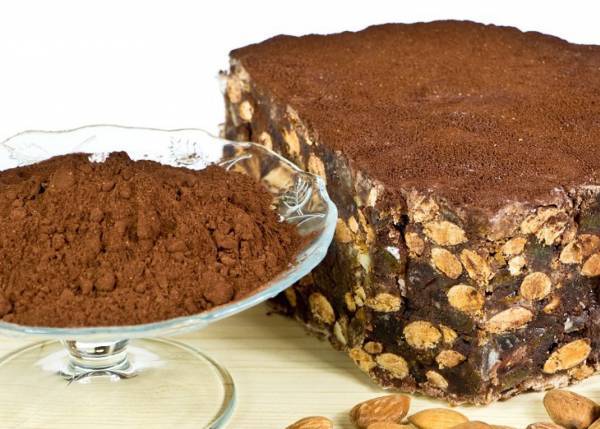
 Alberta Piroci Branciaroli
Alberta Piroci Branciaroli
When it comes to Christmas sweets, it must be made clear that each Italian region has its own specialities; however, the Tuscan ones are those that enjoy popularity beyond their regional borders. Among the traditional Christmas sweets in both Tuscany and Casentino, Panforte (Italian spice cake) is the best known and most appreciated and is said to be the direct descendant of the earliest confectionery product, known as “pan mielato” (honeyed bread).
Originally from Siena and a typical Christmas cake boasts ancient origins, possibly dating back to the year 1000. Like many other sweets, it seems that the first panforte was prepared in a monastery by a nun named Berta who made this delicious mixture of honey, flour and candied fruit with various spices such as cinnamon and nutmeg.
Since 1879, in honour of Queen Margherita of Savoy who visited the city of Siena in that same year, there exists a panforte Margherita that has kept Sister Berta's recipe virtually unchanged. The term “panforte” also appears at the beginning of the 19th century in a letter by Ugo Foscolo that dates back to 1813, in which the poet recalls having received as a gift from the “kind woman Quirina Magiotti Mocenni[...] panforti and several flasks of Montalcino wine.” The tradition of tasting Tuscan panforte at Christmas is also reported by Pellegrino Artusi, author of the 1891 cookbook entitled, La scienza in cucina e l’arte di mangiar bene (Science in the Kitchen and the Art of Eating Well), who recommends it for Christmas lunch.
Ancient Casentino panforte recipe
6 lbs of candied lemon or oranges peels
2 lbs of crushed almonds
2 lbs of whole unpeeled almonds
8 lbs of type 0 flour
2 lbs of spices among cinnamon, cloves or nutmeg
Put two pounds of honey and sugar in a saucepan and heat on low, then add the candied fruit, crushed and whole almonds and let cook for a bit. Remove from the heat and add the spices and as much flour as needed until the mixture has a consistency like that of bread dough. Place the combined mixture in a baking tin and put in a preheated 350F (180C) oven. Halfway through, remove and coat with the paste of the remaining crushed almonds (1 ½ pounds).
Panforte derives from the older panpepato: the difference between the two is that panpepato is covered with pepper, instead of sugar, and involves the addition of cocoa or chocolate to the dough, while panforte keeps the classic dusting of powdered sugar between the two wafers that wrap it. It is a fragrant cake whose taste evokes a distinct contrast of flavours between sweet and spicy, thanks to the presence of pepper.
Panforte and Panpepato are the oldest sweets. We know, in fact, that in Siena, as early as 1206, the nuns of the Monastery of Montecelso, near Fontebecci, received “panes piperatos et melts,” i.e., bread flavoured with pepper and honey, in tribute, from the convent’s listed settlers.
In the famous battle of Monteaperti in 1260, the Florentines, tired from the long journey, would have refreshed themselves with normal food, low in calories. The Sienese soldiers, on the other hand, would have carried spice bread in their pockets, rounded in order to be easily transported. The well-known energetic qualities of this food would have given them such strength that their enemies, even if numerically superior, would be terrified and flee. Thus, the historic victory was born. Legends aside, spice bread was considered a prized sweet especially due to the presence of pepper, a very rare and expensive commodity, imported from the Orient. Its importance was such that it was accepted everywhere as a bargaining chip and even in place of coins.
The ingredients were mixed exclusively in convents and apothecary shops. The apothecaries acted as doctors and it was logical that they, in turn, used the spices to prepare medicines. Spice bread was also well known to the Medici court in Florence, as evidenced by a letter Anna Maria Luisa de' Medici, sent to her uncle Francesco Maria on 13 December 1692, a year after her marriage Johann Wilhelm II, Elector Palatine, where she wrote: “I gladly receive the offer you make to send me a spice bread, but I still doubt that it should arrive a little hard.”
In Pratovecchio, the custom of making panpepato can be traced back to 1500, as evidenced by the Books of Reason by the Florence-based Compagnia della Neve fratnerity when “a panpepato” was offered to Vincentio Galassi, of Sicilian origin - a rector of the souls of the town as chaplain-healer of the Camaldolese and founder of the Dominican “New Nuns” in 1570. Throughout the 1800s until the early 20th century, the Spigliantini family of Pratovecchio, owners of a restaurant, continued to prepare panpepato according to the recipe found above and used the candied peels of bitter oranges and canarone (an ancient hybrid lemon-citron fruit), which were grown by the Medici family.
Alberta Piroci Branciaroli
Translated by Amy K. Rosenthal
cover photo from buonissimo.it
